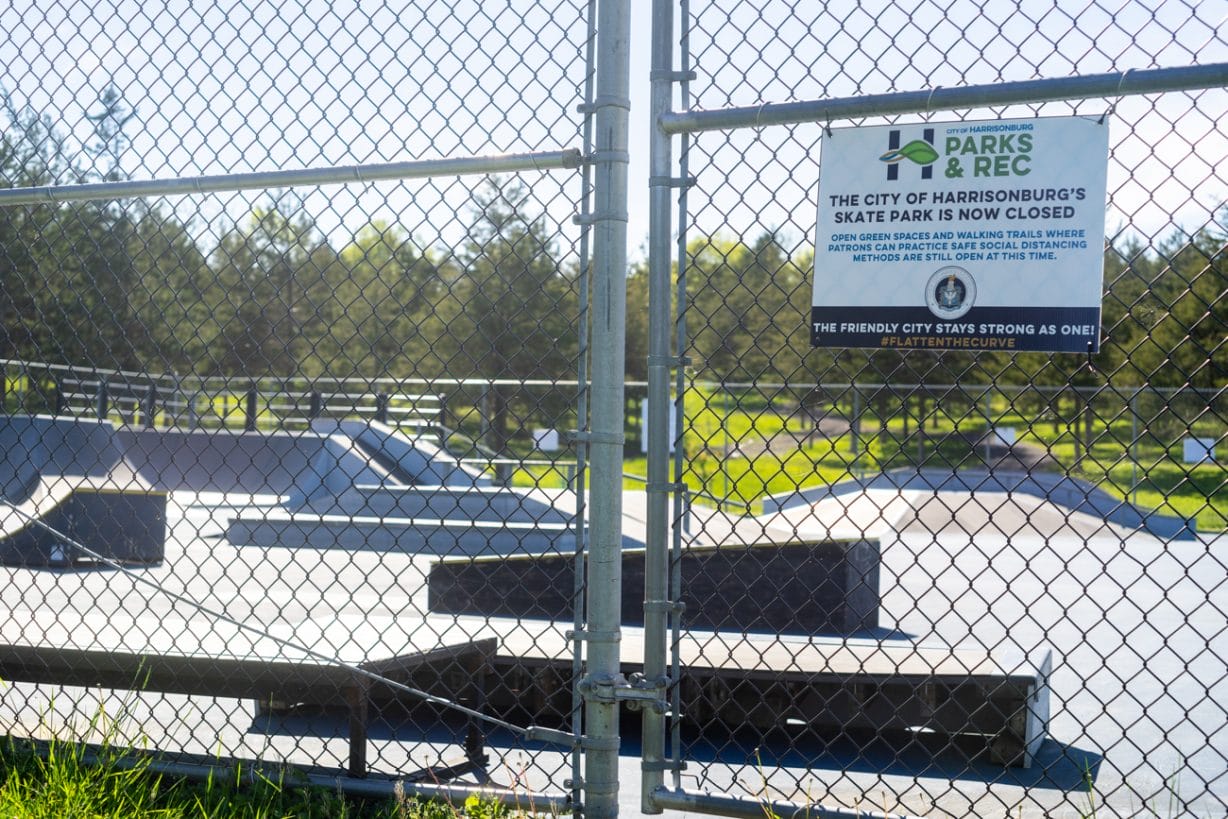
By Rachel Petterson, contributor
Harrisonburg residents can expect as soon as this summer to see several improvements funded through the American Rescue Plan Act, including renovations and upgrades to several parks and recreation facilities.
At Tuesday’s city council meeting, Luke Morgan, ARPA program manager, and Amy Snider, acting deputy city manager, provided updates on construction projects (link to PPT from agenda) and what residents can expect to see in the near future.
While the timelines are still tentative, the highlights include:
- Beginning construction on the city’s new homeless shelter off of North Main Street in May.
- Reaching the final phases of renovations of the Westover Skate Park in late summer/early fall.
- Completing the installation of new lights at Smithland Athletic Complex in late August.
- Paving Kelley Street, Myrtle Street, and Simms Avenue in the spring and summer.
- Starting the repaving of Sterling Street and construction of a sidewalk there this summer, with the project expected to be completed in 2024.
Morgan and Snider said they also expect Fire Station 5 in the north part of town near EMU to open between January and March 2025.
The last city council in December approved the plan for how the city would spend ARPA funds, which the federal government provided in order to aid in long-term recovery from the effects of the COVID-19 pandemic.
As part of the plan, the council set aside some ARPA funds to support athletic fields for adult soccer players in the community. The council agreed with staff that those funds might be best used by improving fields at Thomas Harrison Middle School, with the aim of making a top-notch soccer field there for use by the public, the school, and city Parks and Recreation.
Morgan and Snider also told the council about discussions city staff are having regarding the ARPA money planned for supporting childcare, mental health services, housing, and small businesses in the city. For example, the city council agreed that funding for housing should come more in the form of loans to developers instead of grants to make the fund more sustainable, although grants are not entirely off the table. On the other hand, mental health services will be funded through grants awarded to an organization or organizations that apply for the work of supporting mental health in the area.
This is the first city council meeting about ARPA funds since the funding uses were decided upon. Snider said that, along with updating on the timelines of specific capital projects, conversations that night were to make sure that the staff was on the right track with these programs, based on city council’s intentions and wishes.
“Tonight was the first step at this higher level to see: Is this the direction council wants to go?” Snider said.
This was particularly the case when it came to funding uses, such as how to organize financial support of childcare services, considering the varied needs of potential applicants.
Conversations with the council will continue to ensure that ARPA funds are used with care. The mayor expressed optimism and excitement about the outcomes of these projects in the near future.
“It’s overwhelming when you actually see what we’ve done,” said Mayor Deanna Reed, who attended the meeting virtually. “The diversity of these projects…it’s going to change Harrisonburg.”
Zoning change to allow greater density in proposed Garbers Church Rd. development
Also at Tuesday’s meeting, the city council unanimously approved rezoning land on Garbers Church Road to allow developers to build housing more densely than the zoning for nearby neighborhoods.
Joel Wolters made the request, and the rezoning comes with limits to the extent to which the new zoning can be taken advantage of. Specifically, Wolters must build only single-family houses and limit the density to approximately seven residencies per acre.
Approval came after eight residents gave public comment on the issue, all opposing the rezoning. Most supported the hypothetical development of the land, which is an abandoned horse pasture. What they opposed was the new zoning of R-8, which allows for greater density — in this case an estimated 27 homes.
Concerns those residents outlined included preserving the existing ecosystem and green space; the integrity of the land it would be built on; the effects these properties would have on the value of surrounding properties; and the fact that it would be built on a private road maintained by an home-owners association instead of the city.
Wolters said that the aim of this rezoning was to cut down on the cost of the houses by making the houses smaller and putting them on smaller plots. While he said he is not aiming to provide “low-income” housing, he wants to keep them more affordable than they would otherwise be on larger plots of land. He said the plan is for the houses to go on the market in the low $300,000s.
Now that rezoning has been secured, Wolters will move on to making a site plan.
Journalism is changing, and that’s why The Citizen is here. We’re independent. We’re local. We pay our contributors, and the money you give goes directly to the reporting. No overhead. No printing costs. Just facts, stories and context. We’re also a proud member of the Virginia Press Association. Thanks for your support.












